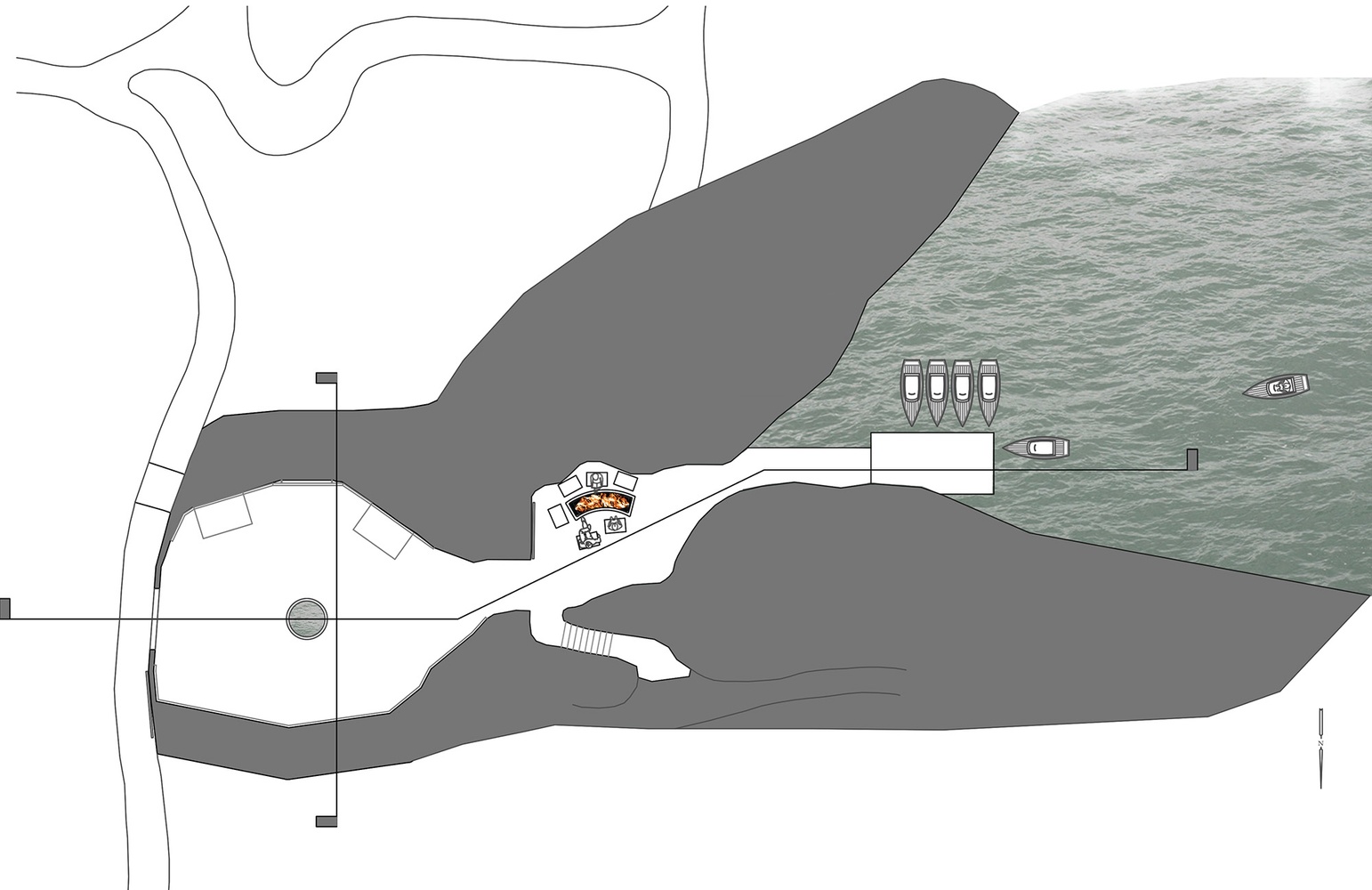Ramble Cave stands in the center of the park map as a buried natural artifact that precedes the park and all the built artifacts around it. It was not part of Olmsted and Vaux’s design, until it was discovered by workers building Central Park in the 1850s.
After the turn of the century, based on newspaper accounts, the cave gained a sinister edge. According to news reports, there had been stories about fugitives, robberies, assaults, sexual harassment, and even suicides. All of this unsavory activity led park officials to seal the cave off to the public in 1934.
The design intervention seeks to turn the abandoned Artifact of the Cave into a Memorial and Exhibit space, through entry points and light sources. Three main entries will open up this piece of history to the public. As shown on the plan, visitors enter from the main path through a new arched opening, down the built stairs from the pathway above, and from the lake by boat, passing the fire pit. A center oculus at the top will allow sunlight into the gallery and rainwater to collect in a shallow pool below. The permanent Exhibit is minimal, to allow for future installations.






